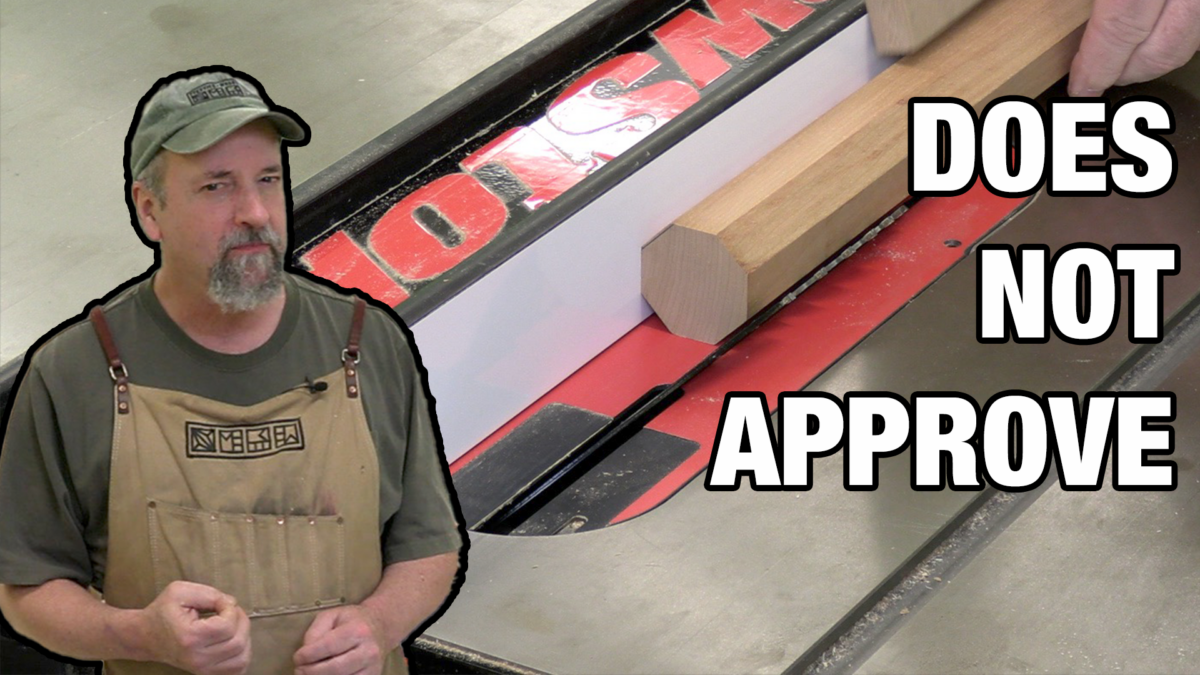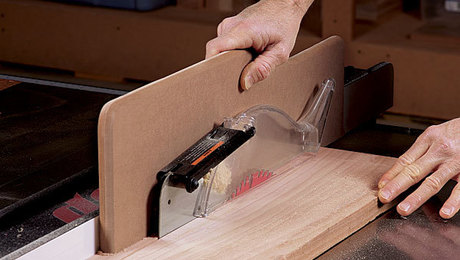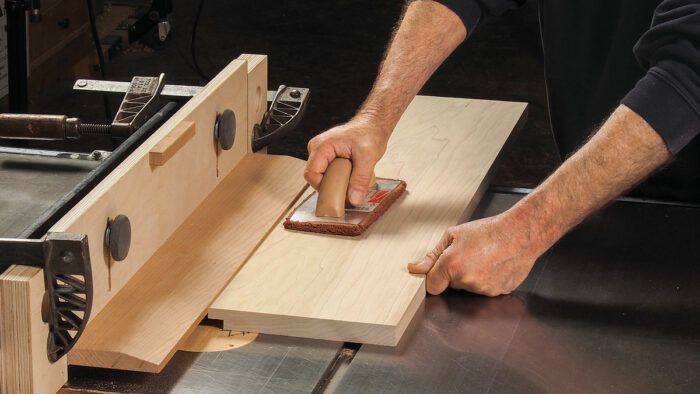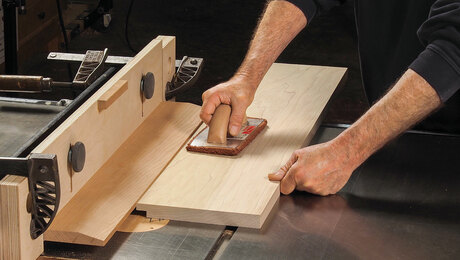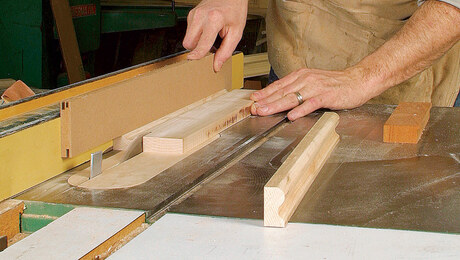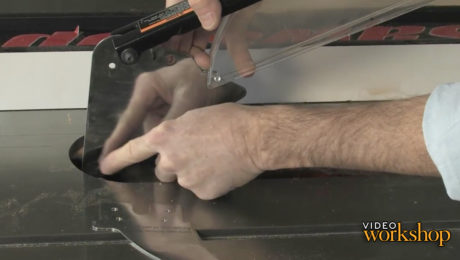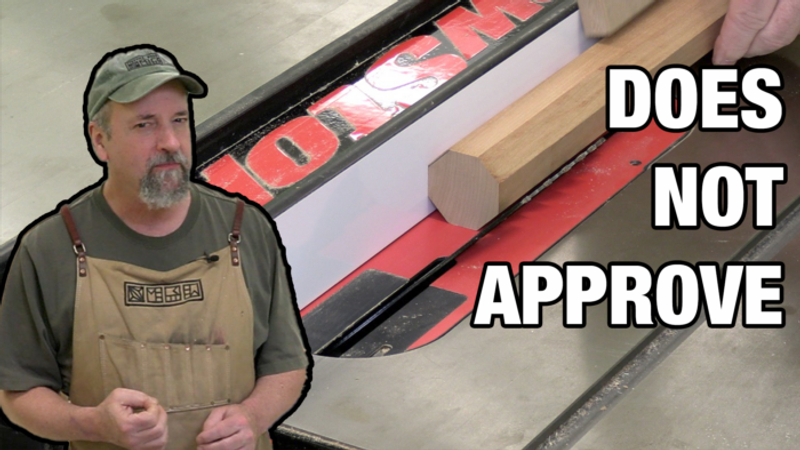
Some table-saw operations are inherently dangerous. If you’ve worked with table saws, watched YouTube videos about them, or taken a woodworking class, you might be aware of these. The foundation of table-saw safety is having a complete understanding of all of the possibilities involved with any and all cuts you make.
The real danger lies in the gray area between things we know are dangerous and things that are absolutely safe. Unless you have a true understanding of what’s going on with the saw, you might think something is totally safe—and you might be able to get away with that task for 10, 20, or 30 cuts. But when things go wrong, they can go wrong quickly.
The main point is that you need a realistic assessment of the risks at every step when you’re using the table saw.
Question the cut
The primary question to ask is this: Is my workpiece trapped between the fence and the blade during this cut? If the answer is yes, then another question follows: Does it have to be? For something like a simple rip cut, the answer is usually yes. It’s a basic process, but it involves many moving parts, such as footwork, hand placement, and pressure. The key is controlling the workpiece through the cut, and that’s where push sticks and push pads come into play.
For narrow cuts, I recommend using a push stick. Avoid the small bird’s-mouth push stick that comes with every table saw. It’s not effective. You need to control the workpiece through the cut. A good push stick allows you to apply rotational force to keep the stock against the fence.
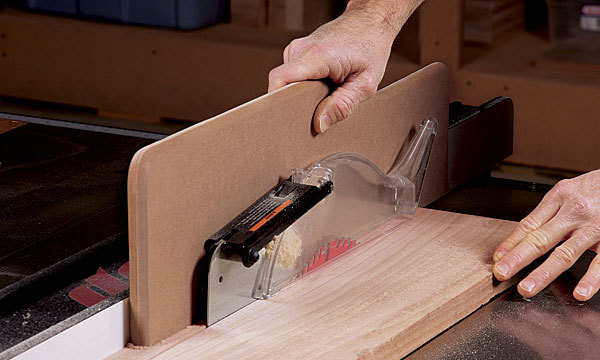
A paddle-style push stick with a long reference surface is ideal. Marc Adams has a design I really like. It has a recess to keep your hand forward of the hook, giving you better control.
Short, wide pieces have an even greater tendency toward kickback. A lot of people think that the heart of table-saw safety is keeping their hands far away from the blade. The problem is that as you’re pushing the stock through, it can lift up and spin around, pulling your hand into the blade very quickly before you can react.
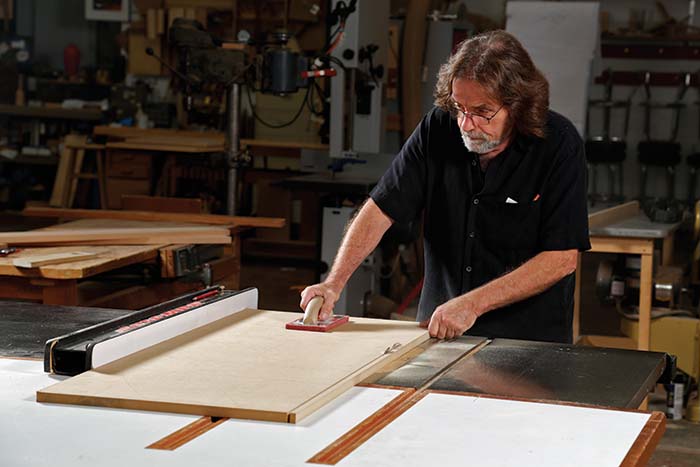
Kickback is a huge problem, which is why I like using a push pad. Push pads available for purchase often have small, slippery pads. I prefer using the rubber pad from a grout float. You can either use the float itself or attach the pad to a handle. This setup provides a good nonslip surface, allows you to apply rotational pressure, and keeps your hand above the blade, ensuring safety. This is a safe and effective way to manage your cuts.
A safer way to cut rabbets
Now let’s discuss cutting a rabbet on the edge of a board. A common method is using a dado blade, but this can trap the workpiece between the inside of the dado set and the rip fence. This can lead to the workpiece coming away from the fence and into the blade, causing kickback. Instead, you can use an L-fence or a sacrificial fence. These tools support the workpiece and avoid trapping it, making the cut safer and cleaner.
Cutting octagons safely on the table saw
Similarly, when cutting the corners of an octagon or raising a panel, it’s crucial to avoid trapping the workpiece. Using an L-fence on the opposite side of the blade can prevent dangerous situations and ensure a safer operation.
In summary, always ask yourself if the workpiece is trapped between the blade and the fence. If it is, find a way to avoid it. Understanding these principles will help you work more safely and effectively. Good luck!
Sign up for eletters today and get the latest techniques and how-to from Fine Woodworking, plus special offers.

